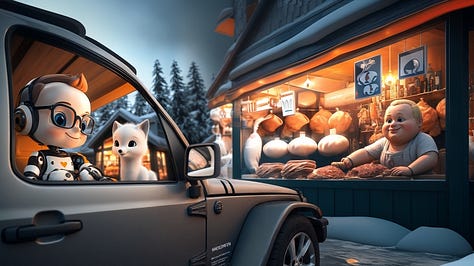We’re living in a time where becoming familiar with AI tools has transitioned from being optional to essential, especially for content creators. At the end of November, I decided to embark on creating a children’s storybook using AI tools for illustrations, and I wanted to share my experience with you.
Why a Storybook Featuring Leo?
I chose to create a storybook with Leo as the main character because he was originally developed for my Speakjourney project. However, I faced challenges in financing that larger vision. By starting with a storybook, I can connect with children while still delivering educational content. This initial step allows me to build a foundation that can later expand into my broader vision.
The Significance of Arctic Foxes
Selecting an Arctic fox as a key character was intentional. This beautiful species is endangered due to climate change, and through this story, I hope to gently introduce children to themes of environmental conservation and animal protection. My goal is to contribute meaningfully to these causes in the future, and this project feels like a small but significant step in that direction.
The Creative Process: A Test of Patience
From personal experience, I find Midjourney excels at generating versatile images in a style similar to Disney or Pixar. However, when it comes to realistic imagery, I believe Midjourney and Flux offer comparable quality.
Krea AI has proven invaluable for editing images. Its new editing features enable me to refine specific elements while keeping the background intact. For example, if I generated an illustration of Leo and wanted to change his posture or facial expression to match the story, Krea AI enables me to select those areas specifically. This allows for targeted modification.



A limitation I encountered was Krea AI's struggle to preserve all fine details throughout the story. For instance, Leo's clothing and accessories were not always consistent. While these tools are impressive, they require patience, experimentation, and iterative improvement. I often had to refine the prompts or find creative ways to phrase them so the AI tool would understand my vision for the illustrations. As a perfectionist, I often found it difficult to settle for "good enough" when my vision didn’t fully align with the output. But as we say, done is better than perfect, right? The process of storytelling and creativity involves embracing imperfections as much as striving for polished results.
You can check out the storybook here:
What’s Next?
Once I'm satisfied with the final product, I plan to publish the storybook on Web3 educational platforms like Olympus, which I've featured before on my blog. But before taking that step, I’d love your feedback on my first attempt at creating a children’s storybook.
If you know of other AI tools that can help refine illustrations or ensure consistency in character design, please let me know in the comments—I’m always eager to learn new techniques!
Working on this first draft has been enjoyable, even though it tested my patience at times. While it’s far from perfect, I hope it inspires you to explore the potential of AI tools in your own creative endeavors.
Let me know your thoughts and suggestions!





